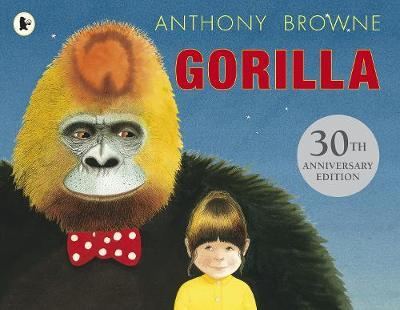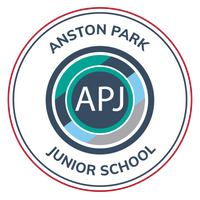
Welcome to the Year 4 webpage
On this page, you will find information about Year 4.
If you have any queries, please don't hesitate to speak to the class teacher.
Alternatively, you can contact school via email: enquiries@apj.wwpat.org
Year 4 Teaching Staff:
Mrs. Drake (4D)
Mr. French (4F)
Y4 Teaching Assistants:
Mrs Morton
Y4 Long Term Plan
Below is our long term plan for all subjects. This shows the topics that will we cover across each half term.
English

In English, this half-term, we will be studying the book 'Gorilla' by Anthony Browne. We will be writing for a range of purposes to different audiences using ideas from the story.
Science
This half term we will be learning about the digestive system. We will find out how we digest food and the important parts of our body that help us get the nutrients we need from food. We will learn about how to stay healthy by eating a balanced diet. We will be finding out about the function of our intestines and stomach and also the different functions of our teeth. We will also be finding out how to keep our teeth healthy.

These are the key questions we will be finding the answers for:
Can you identify the different types of teeth in humans and their simple functions?
How do I keep my teeth healthy?
What is the job of the digestive system?
What happens to food before it gets to the stomach?
What is the job of the stomach?
Why do we have a small and a large intestine?

These words are the important vocabulary for the topic:
herbivore, carnivore, digestive system, tongue, mouth, teeth, oesophagus, stomach, gallbladder, small intestine, pancreas, large intestine, liver, tooth, canine, incisor, premolar, producer, prey, consumer
Can you explain the meaning of any of the words already?
You can start your learning journey about the digestive system by watching this short clip. It might help you think of some questions you would like to ask:
Geography

Can you remember the name of each continent? What about the oceans that you learnt in Year 3? This half term, we will be learning more about the continent of Europe. Can you locate Europe on the map? We will be learning about different countries in Europe and about physical and human features particularly in Germany. We will be using atlases and maps to improve our geographical knowledge and skills. We will also be using Google Earth. You can start exploring Europe by clicking the Google Earth logo below.
These are the key questions that we will be finding the answers for:
What are the countries of Europe?
What are the physical features of Germany?
What are the human features of Germany?
What is the role of Germany in the EU?

These words are the important vocabulary for this topic:
Continent, country, physical, human, features, population, economy, capital, European Union, northern, southern, eastern, western, hemisphere
Can you explain the meaning of any of the words already?
We will be making some comparisons between the UK and Germany. You can start learning about Germany by watching the short clip below:
You can also challenge yourself with this quiz. How many countries in the continent of Europe can you identify?

Reading
Reading is an essential part of the curriculum and opens up many other curriculum areas. We expect children to read at least three times a week at home. Some children may choose to read independently, which is completely fine, but it is also helpful for adults to check children understand the vocabulary within the text and understand the content of what they are reading.
Times tables
Children need to spend time at home practising their times tables. Children can prepare for the times table challenge and aim to achieve their best times. Don't forget to visit the Times Tables Rock Stars website to help them practise their tables and earn coins to promote their band! It is their challenge this year to top the leader board and help their band to win the Battle of the Bands.
MTC (Multiplication Tables Check)
The children in Y4 will be completing a Multiplication Table Check in June. You can find out moreinformation about the MTC below our homework menu.
Homework Menu
As part of our wider curriculum, children can also choose to complete homework from our homework menu (see below). This is optional; however, completing homework will allow children to take their learning further and share it with you at home. Once any tasks have been completed please bring them into school for us to look at.
Below, you can also find information about the times table check that children will be completing as well as the statutory words that children should be able to read and spell by the end of Year 4. Learning these words would be a really useful piece of homework.
Spelling
These are the list of statutory words that children need to be able to read and spell by the end of Year 4. The moreyou practise the more you will know! You could practise these words at home by handwriting them, asking an adult to test you or using some of the spelling strategies we have learnt in school.
Other Useful Information
P.E.
Please ensure that your child comes to school in their P.E. uniform on PE days. Our PE days are Monday and Friday.
Indoor Kit = plain white t-shirt, shorts or tracksuit bottoms and suitable shoes (pumps or trainers)
Outdoor Kit = tracksuit bottoms and warm jacket and shoes suitable for the outdoors (trainers)
Please remember that no jewellery should be worn and earrings MUST be removed by children before P.E. Long hair also needs to be tied back.
 |
 |
USEFUL WEBSITES:
This website has a good range of free games to practise phonics and decoding skills.
http://www.sentenceplay.co.uk/
This has a good range of games which support your child’s spelling and grammar skills.
This is a fun and competitive way for your child to learn their times tables. Look out for new competitions and challenges. Try to top your class leader board.











